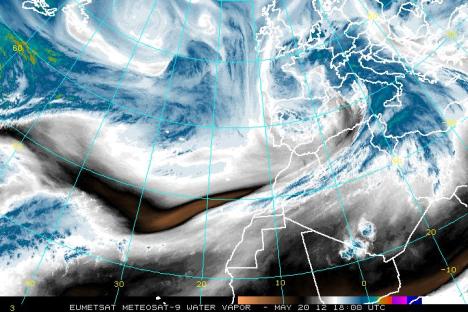Extreme Queensland floods linked with evaporation from high sea surface temperatures
By Bob Berwyn
SUMMIT COUNTY â€"There’s been a lot of discussion recently about how TV weather forecasters handle the issue of global warming â€" to the point that a watchdog group â€" ForecastTheFacts.org â€" has started singling out what it sees as the worst offenders in the forecasting community.
Some of those high-profile weathermen in big market cities have a responsibility to tell viewers more about the emerging science that shows how a warming planet will affect day-to-day weather, including the potential for more frequent and severe storms, extended periods of drought and other extremes.
The group takes issues with statements like these, from John Coleman, of KUSI-TV in San Diego, who said, “Our crops and our forests are thriving because of carbon dioxide,†when, in fact, a warming climate has been at least partially responsible for a destructive wave of insect pests and forest fires that have devastated forests across the West.
Along with the forest crisis, there are more signs that a changing climate is affecting weather in different parts of the world.
Australian scientists recently documented how record-high sea surface temperatures off Northern Australia contributed to a record deluge of rain that flooded huge areas of Queensland in December 2010.
Early evaluations of the record rains suggested that the combined effects of a strong La Niña and a tropical cyclone were responsible for the rains, but the latest calculations by climate researchers show that evaporation from the warmer seas to the north and northwest of Australia probably contributed about a quarter of the total.
Sea-surface temperatures off northern Australia in the Indian Ocean, Arafura Sea and Coral Sea were unusually warm at the time, in places as much as 2 degrees Celsius, with an overall warming trend of about 0.2 degrees Celsius per decade.
“If the observed warming trend in the sea-surface temperatures continues, this result suggests that future La Niña events are more likely to produce extreme precipitation and flooding than is present in the historical record,†said Dr. Jason Evans, of the University of New South Wales Climate Change Research Centre.
“If the sea-surface temperature increases can be attributed to global warming, then the probability of La Niña events producing extreme precipitation responses similar to December 2010 will increase in the future.â€
The researchers caution, however, that this was the strongest La Niña event during the satellite record and that equally extreme events may have occurred before the satellite record began.
The extreme December rains â€" coming after a wet spring â€" produced nine floods that affected almost 1,300,000 square kilometres of land, caused billions of dollars in damage, led to the evacuation of thousands of people, and resulted in 35 deaths.
If there’s even the slightest chance that global warming plays a role in events like this, it certainly would be irresponsible if weather forecasters didn’t take it into account when they formulate their messages.
In another study, researchers in the UK have showed how warming temperatures in the Atlantic basin are changing the way storms develop and move from the ocean toward Europe.
While many climate models forecast a poleward shift of mid-latitude storm tracks in response to human-caused warming, the North Atlantic storm track â€" probably due to changing ocean currents â€" is strengthening and extending farther east, especially on its southern flank.
Those shifts have huge implications for western Europe, “with considerable societal impacts related to a rise in storminess in Europe,†the researchers wrote in their paper.
The culprit may be the Meridional Overturning Circulation, which transports heat northwards in the Atlantic Ocean. The current is projected to weaken in response to greenhouse- gas forcing. Over the northern North Atlantic this is expected to offset some of the greenhouse-induced warming in sea surface temperature.
39.586656 -106.092081
Filed under: climate and weather, Environment, global warming, La Niña Tagged: | Atlantic Ocean, climate change, extreme weather, global warming, La Niña, Sea surface temperature

No comments:
Post a Comment